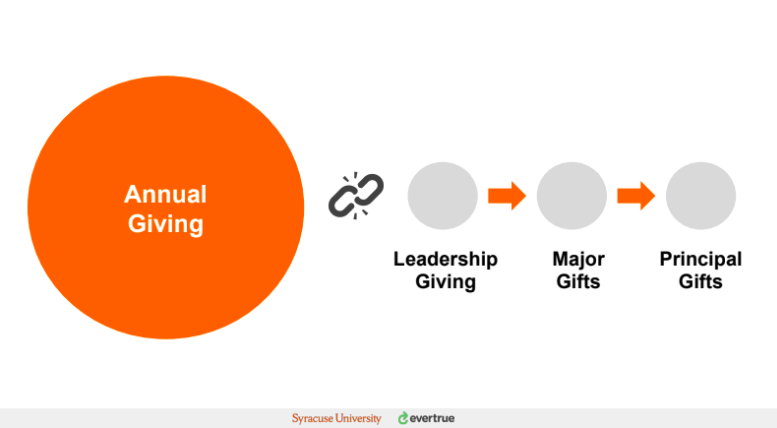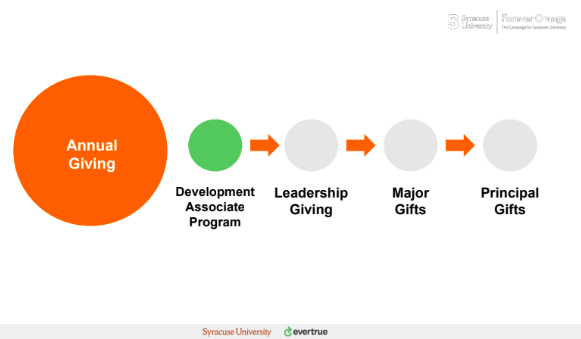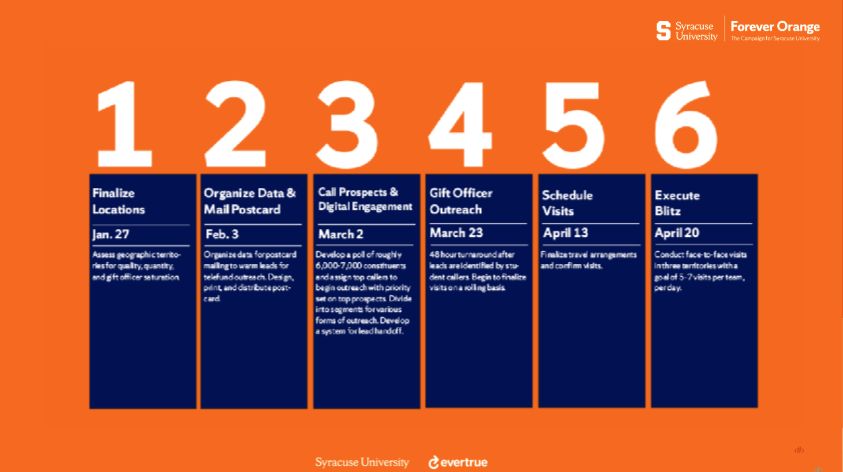This year at CASE District II, we spoke with Shawn Rommevaux, Associate Director of Development at Syracuse University. Three years ago, Syracuse launched its Development Associate Team (DAT) , a group of frontline fundraisers focused on securing leadership gifts and delivering a customized, one-on-one experience to hundreds of prospects with potential.
This program has enabled Syracuse to reach more high-potential prospects than ever before, doubling giving in the development associate prospect pool in the last fiscal year!
Here are the three major lessons they learned along the way:

1. Understand the problem.
Every institution has unique needs, but there are common trends that unite all of advancement.
Donor retention is low, donor counts are dropping, and institutions are struggling to inspire long-term loyalty from their donors. None of these facts are fun to think about, but it’s important to identify how your institution can adapt to reverse these trends.
The team at Syracuse realized that their problem could be boiled down to one missing link. Leadership giving, major gifts, and principal gift donors are funneled through a clear path. Gift officers are charged with nurturing these relationships and progressing donors through the pipeline.
But what about annual giving? Wealthy alumni that are giving $100, $500, or more each year? Or have given once and never again? Are these donors getting any attention? Is there anyone tasked with nurturing these relationships?

The Development Associate Team bridges the gap between Annual Giving and the rest of Syracuse’s advancement office. They’re tasked with visiting and qualifying unassigned constituents that have high capacity ratings, recent giving history, and are engaged with the university and referring them up to LGOs or MGOs where applicable.

2. Focus on a new area.
Are there geographic areas that have a high alumni saturation, but little to no gift officer engagement? The Syracuse team is using a blitz strategy to engage and qualify new prospects. They develop a pool of 6,000 – 7,000 constituents and use a multi-channel strategy (think telefund, direct mail, and email) to target them.
As people engage with this campaign, Syracuse looks at past giving data, capacity indicators, and net worth to identify top prospects in this cohort. Then, the entire team plans a trip to the region and focuses on booking meetings with these top prospects. They aim to get 50+ visits in each region there is a blitz.
3. Set clear goals. Part 2.
We’ve talked about the importance of setting clear goals in our post about K-State.
Well, nothing’s changed since then, but it bears repeating. After all, how can we measure the success of a new program without measuring against key performance indicators?
The development associates at Syracuse are each responsible for contacting hundreds of donors, soliciting gifts of at least $2,500, and visiting at least 120 prospects. They’re bridging the gap between the mass marketing approach to annual giving and acquiring new leadership or major gift donors, making sure the Giving Funnel continues to run smoothly at Syracuse.
These goals will vary by team and institution, but it’s important that they are well-defined and in line with program and institutional priorities.
Interested in learning more? Let’s chat to see how EverTrue can help get a similar program off the ground at your institution.
Or watch a webinar recording on leadership gift programs, featuring Syracuse and their Development Associates.
